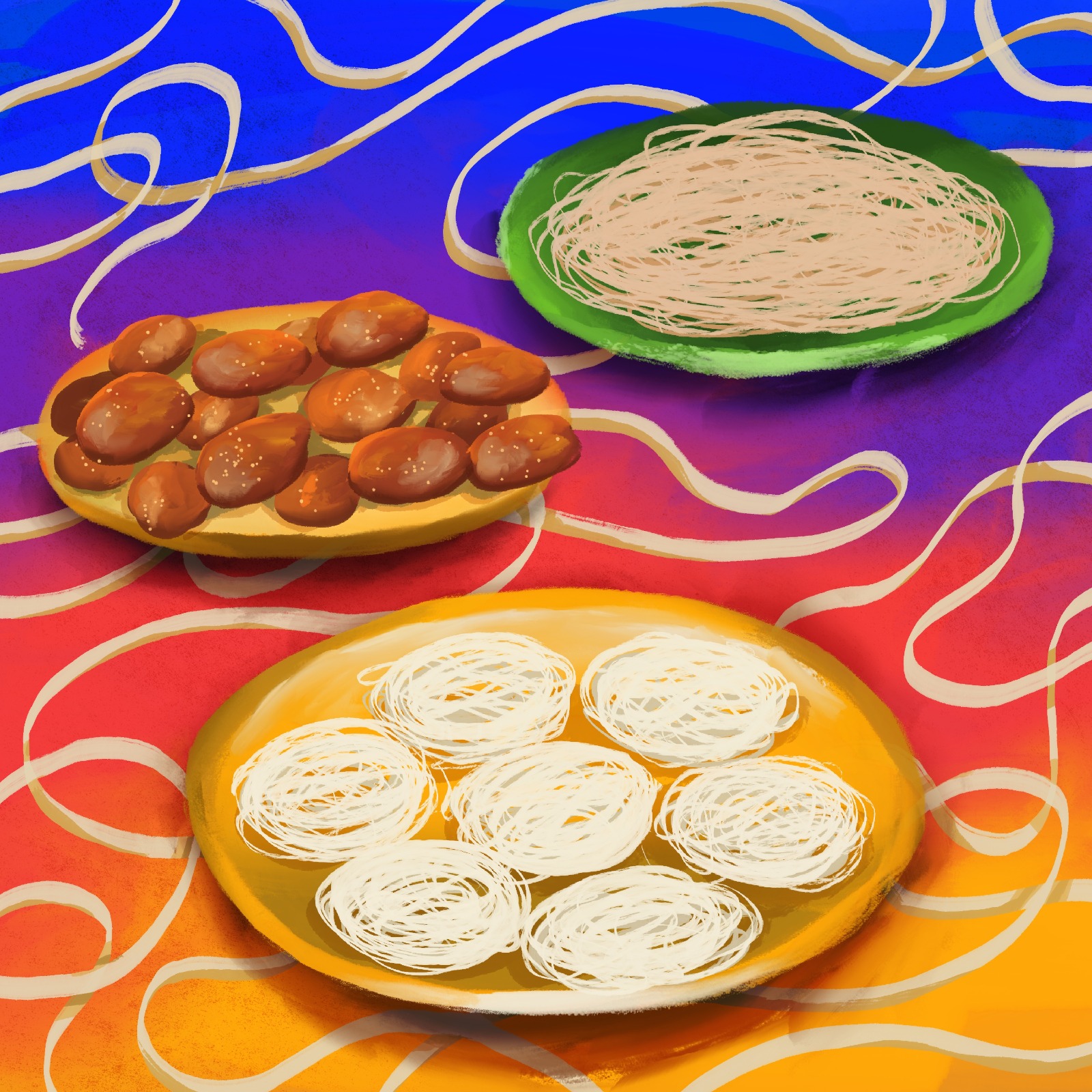When the lack of a heritable thread sequesters a family from the Deepavali tradition of kajjaya-making, they find a solution in the kitchen, and a tradition of their own, by preparing edible threads.
It’s a story I’ve heard often. It’s a story from my mother’s childhood, and it’s also a story from my childhood about her childhood. Now that I’ve acknowledged the complexities of what I’m about to share, and made you think of the movie Inception, let me tell you the story itself.
Kajjaya, also known as adhirasam, is a sweet, deep-fried snack made with rice and jaggery. It is an intricate recipe prepared during festivals. The crux is, you can’t make kajjaya if you don’t have threads handed down from your ancestors.
Before I begin, you need to know that most of this storytelling happened in the kitchen. While my mother cooked, I sat on the kitchen counter and listened to her stories. It wasn’t just stories she’d share, there was family gossip that was palatable for a child, updates on relatives and extended family, and on the rare occasion, when we had no more stories, we’d talk about films, or just singalong to old songs.
The conversation I’m referring to in this story happened close to Deepavali many years ago. In South India, the Deepavali festival celebration includes a ritual that needs threads to be handed down from the ancestors. This heritable thread is often kept within the family. Some families now claim to have received these threads from priests (lucky them!). My great-aunt claims she found a ball of thread in the lake where she did her laundry in the 1980s, and she’s been celebrating the festival by making kajjaya at home ever since.
Kajjaya, also known as adhirasam, is a sweet, deep-fried snack made with rice and jaggery. It is an intricate recipe prepared during festivals. The crux is, you can’t make kajjaya if you don’t have threads handed down from your ancestors.
My ancestors never had any threads to pass down to us. My great-aunt either got very lucky, or she chose to seize the moment. These handed-down threads were supposed to help tie luck and fortune to the people who perform the puja ceremony, and also to their families. After my aunt found the thread, she held onto it, for her own sake and for her family’s. In the end, the threads meant you could make kajjaya, a dense and crunchy (or soft depending on the batter and the cooks’ preference) sweet for Deepavali. My great aunt’s story was an oft-travelled detour in the kitchen sessions with my mother, one she took right before she went on about making sweets with her father and brothers during Deepavali.
The process and story of making shasthalu makes for such a warm and celebratory visual. My grandfather and uncles operated a big wooden apparatus to press the shasthalu, while one of my uncles or aunts stood around and caught the strings on an agave leaf.
Many years later, my mother found an excellent loophole to making kajjaya. Thanks to their excellent shelf life, she decided she would make them a week before Deepavali, thus separating the preparation from its festive connection. But my grandparents back in the day made shasthalu or shavige, or idiyappam or nool puttu, for Deepavali.
Shasthalu is vermicelli, an edible thread, and my mother’s connection to her dead parents and her childhood. It’s also my connection to my maternal grandparents; I’ve never met them, but I have a connection with them that I share with my mother.

The process and story of making shasthalu makes for such a warm and celebratory visual. My grandfather and uncles operated a big wooden apparatus to press the shasthalu, while one of my uncles or aunts stood around and caught the strings on an agave leaf.
When my mother and I operate a small metal apparatus to make shasthalu, I wonder if my mother, aunts and uncles also gossiped with my grandfather while cooking. If my grandfather had been around when I was growing up, would we have also made shasthalu together? What would I have told him? I don’t know.
My grandparents didn’t have a thread to celebrate the Deepavali ritual and therefore couldn’t make kajjaya, so instead, they passed on a recipe for edible threads. I do know this is a thread I want to share with my family and friends. I want to give my loved ones something to hold and pass on.
